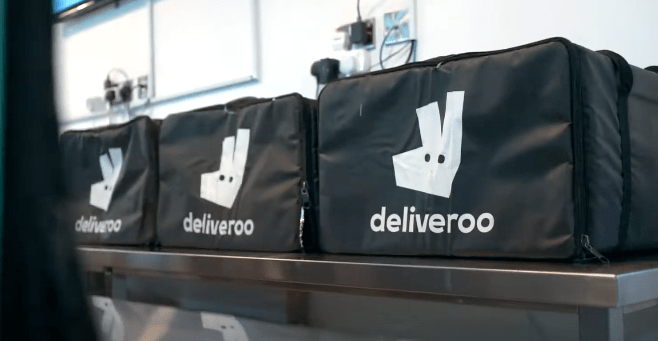The hybrid gig laws for Australia looks promising on all fronts. Recently announced by the Labor Government, there appears to be light at the end of this long tunnel.
For gig or platform workers, the main beneficiaries but it is also a step forward for regulators, employers and the country.
Finally a framework for determining fair and appropriate reward and protection for workers is evolving. The Australia’s move on setting minimum standards for gig employee workers is different to that I have seen elsewhere.
It is actually leveraging an existing mechanism that works. The closest thing to a honest broker or arbitrator.
The bill to address this is expected to be introduced in late 2023.
The approach is to empower Fair Work Commission to set minimum standards for thousands of worker not classified as employees. The plan is to cover the digital platform workers from 1st July 2024.
Also the term “hybrid worker” has taken hold. I am not sure it it is the work of the media or the regulator but an apt description and a recognition they are different.
“Employee-like workers”
What the labour Albanese Government are planning is to create a hybrid worker protection mechanism. Doing it without classifying them statutorily as “employee“.
The initial approaches by UK and mainly European countries do not accomodate the wildly popular gig economy and its benefits well. Benefits of the gig economy recognised by the general public that covers consumers and businesses. More importantly benefits that incentivised thousands around the World to enter the gig economy voluntarily.

California Proposition 22 referendum left it to the people to decide and they did. So it was not policymakers or the judicial branch interpreting existing laws. Laws that existed long before the gig economy emerged. Laws that did not consider the key elements of the gig economy.
California Proposition 22 which I covered in a post here in April 2023 is a landmark decision. I have it here. It was a win for gig workers as well as companies that innovated the gig economy. Or least a compromise for both sides.
The hybrid gig laws proposed approach is different to Proposition 22. Though the Government or the media did not mention Proposition 22, I am sure the policy wonks looked into it or realised it is of value.
You cannot ignore Proposition 22. It was crafted with key players such as Uber and DoorDash working with workers and the voting population.
Vested interest, yes. But they had to craft out specific worker protection clauses without ruining the nascent gig economy model.
Fair Work Commission
The Fair Work Act and the Commissions and its early preceding agencies is one of the best legislative and regulatory framework and mechanism that Australia has created. Something that World can learn from.
It not only protects workers and employees but also companies, employers and entrepreneurs who have risked capital and investments.

Primarily an independent tribunal and headed by a Justice of the land. It has ruled in favour of one side or the other on various occasions.
Below is an extract of their aims and what it does and for whom.
- providing for terms and conditions of employment
- setting out rights and responsibilities of employees, employers and organisations in relation to that employment
- providing for compliance with and enforcement of the Act
- providing for the administration of the Act by establishing the Fair Work Commission and the Fair Work Ombudsman
On top of these provisions and guidelines, the Act also gives employees a guaranteed safety net. Of fair, relevant and enforceable minimum terms and conditions through the National Employment Standards (NES), Modern Awards and National Minimum Wage orders.
Recognition of fundamental differences
Gig workers or the more current desire to call them platform workers shows the challenges of defining this category of workers. Since the early and pioneering days when Uber took to the streets, we had this challenge but we did not realise it.
Initially they were happy to be called independent contractors or service providers or to some the focus was part-time nature of the activity besides their day job
Both independence and flexibility were seen as god-given ( as it was unexpected) to those who were keen to provide the service. They did not want to be considered a normal employee shackled to work terms with little flexibility and or lacked the notion that they provided a service.
Both the terms “flexibility” and “independence” continue to be desired state of all workers. Especially those who left conventional full time employment intentionally for the gig world.
The first challenge was when people moved into full time work in gig jobs and wanted the same set of protection.
In many cases one could reasonably assume that they were displaced from conventional employment or could not find full employment. Not by choice.

The second challenge is that many of the firms in the gig economy including Uber, Lyft etc were reducing incentives and teaser rates as more moved into the gig economy. It was not exploitation, as these firms were not making a profit yet. Venture capitalist were funding the cash-burn approach until demand, scale and market rationalisation allowed a sustainable and profit making model.
So with the cut in monetised incentives and rates deteriorating over item, their expected lift style changed. And not for better. There was and is a growing demand for gig worker protection of some sort.
Slow move to hybrid model of employment
I don’t think any of us even considered a compromise or a hybrid model. It was initially a battle between private contractor or classified legally as an employee. Nearly all the signs indicated an employee..
They wanted freedom, flexibility and given a choice when and where they wanted to provide a service.
It came to a head when many began to choose the gig economy as their full-time and only employment.
The wait
Let see what evolves from this impending hybrid gig change in law. And I suspect both sides are optimistic on how it operates. Well done Australia even though it has yet to come into being. The thought of creating a hybrid model and the use of the exisiting and trusted Fair Work Commission as an honest broker is exemplary.
Mark your diary for 1st July 2024 to see if Australia gets it right.
Post Note: Since this post, the Australian Govt has introduced laws which I have covered in this post.
